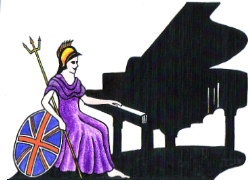Teachers, Accompanists and Piano Entertainers in the UK

UK Piano Page

251 Kings Road
Chelsea
Chelsea, London
England
Chelsea London was founded on the famous King's
152 - 160 Wardour Street
Soho, London W1F 8YA
England
For nearly two hundred years we have sold upright
184 St. Ann's Road
Haringey, London N15 5RP
England
J. Reids supply new and fully restored pianos from
142 Edgware Road
Marble Arch, London W2 2DZ
England
Jaques Samuel Pianos has been providing pianos
34 Engate Street
London
Lewisham, London SE13 7HA
England
Robert Morley & Company Limited, established 1881
Music Festival for performers and guests Our 10th
18-06-2022 12:30PM
The Morecambe Bay Piano Group was set up to extend
11-12-2021 01:00PM
The Morecambe Bay Piano Group was set up to extend
08-01-2022 01:00PM
The Morecambe Bay Piano Group was set up to extend
12-02-2022 01:00PM
Temperament
Temperament is both the process and result of making slight changes to the pitches of a pure musical scale, so that the octave may be conveniently divided into a usable number of notes and intervals. In the history of Western music's 12-note octave tradition, there have been several, fundamentally different forms of temperament applied to the developing keyboard. Music suffers when performed in a tuning that is different than that which the composer used in its creation.
Well Temperament Keyboards
Well Temperament Keyboards may be tuned so that all keys are musically usable, but contain varying degrees of the "wolf". This is the tuning used in this recording. Between the Early Baroque and Romantic eras, the popular tuning was something between Meantone and Equal Temperament. This era was a brief, transitional stage in temperament history, but considering the music composed during this period, its importance cannot be overlooked. This style of tuning is called "Well Temperament" following the use of the term by J.S. Bach. The term refers to a genre, rather than a specific temperament, as there were many Well Temperaments in use between 1700 and 1825.